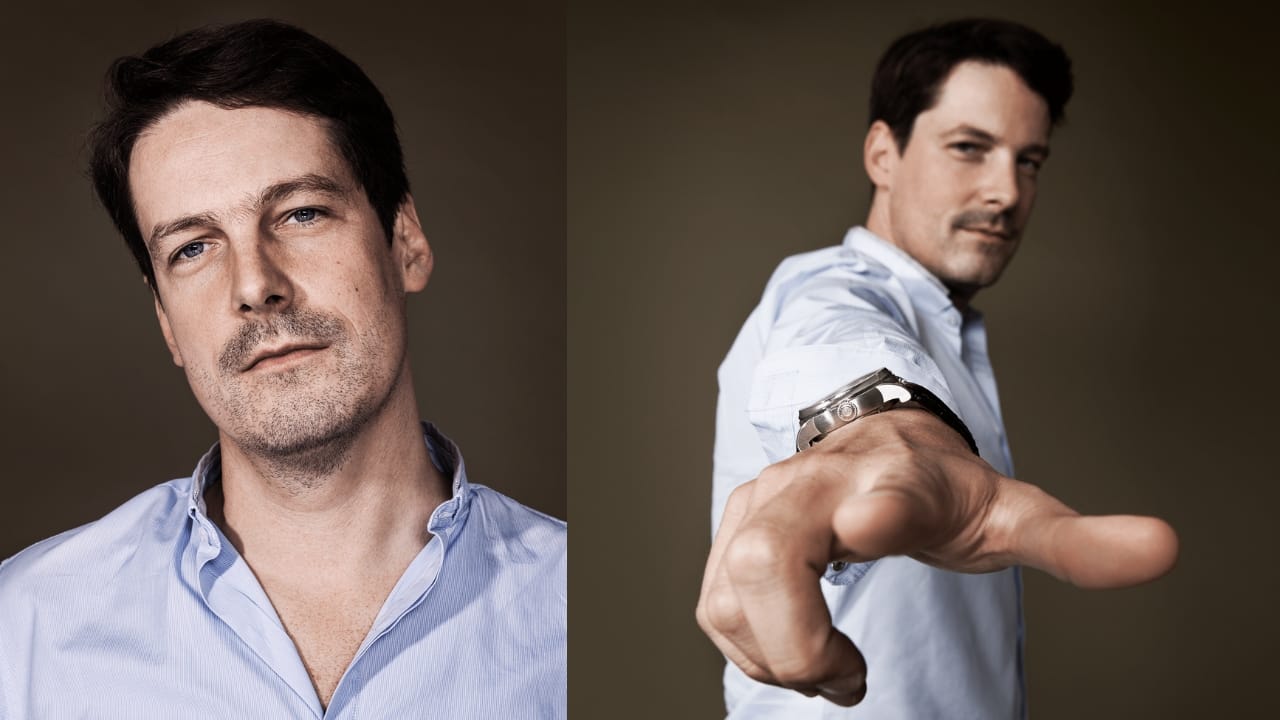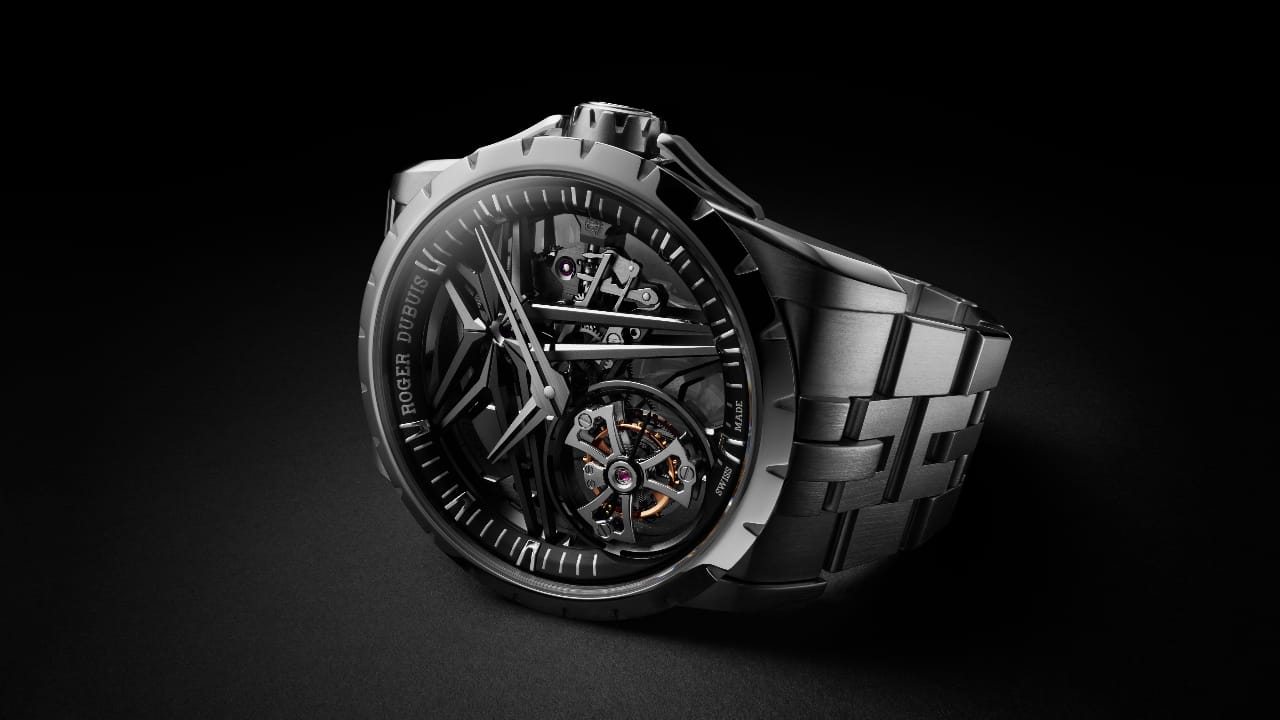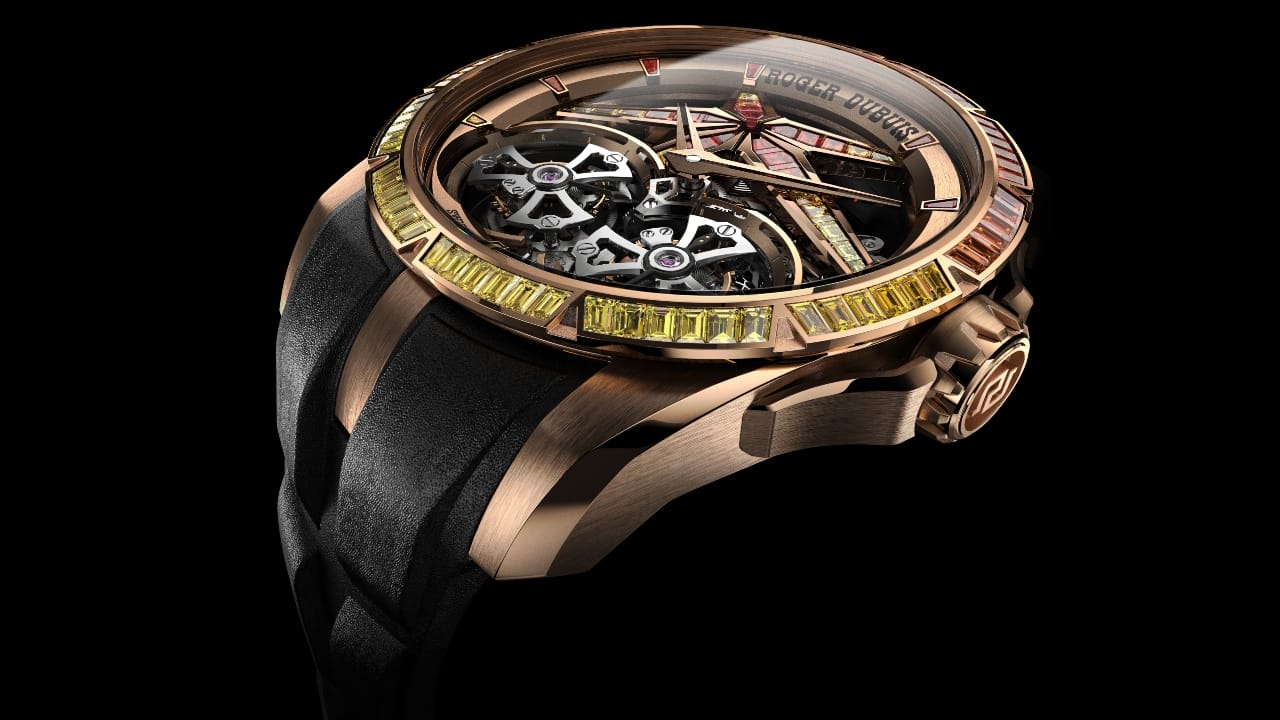At Watches and Wonders 2024, Roger Dubuis unveiled three new references, all themed around the tourbillon. There is the Excalibur Monotourbillon Titanium 42mm (limited to 27 pieces), which is a lightweight, monochromatic, minimalist execution—or at least as minimalist as a skeletonised tourbillon watch can be in the bold dimensions of the Excalibur case. There is also the Excalibur Sunrise Double Tourbillon Pink Gold 45mm (limited to eight pieces), where the mechanically compelling, differential-linked twin tourbillons are paired with 108 gems on the bezel and dial in a combination of garnet, orange spessartite and yellow sapphire carefully selected to invoke a gradient of sunrise colours. Last, but certainly not least, is the Orbis in Machina Central Monotourbillon (limited to 88 pieces), which has a 45mm pink gold case, and a concentric aesthetic that emphasises its centrepiece attraction. All three watches are marked with the Geneva Seal, indicating that its movements have been certified to have reached extremely demanding levels of performance, reliability and finishing.

The brand has a history with the tourbillon that extends more than two decades. It is a story that Gregory Bruttin, Strategic Product Director, knows well. He started at Roger Dubuis, the company, in 2002, which means he was able to hone his technical watchmaking skills under Roger Dubuis, the man. “He was a very kind person. Very calm and very kind,” Bruttin says of Dubuis, the company’s co-founder who passed away in 2017.

It also meant that Bruttin witnessed the in-house development of the manufacture’s first tourbillon, released as the RD03 in 2003. “It was a crazy project,” he recalls. “The challenge was not only to develop a tourbillon, but also to develop the escapement and the hairspring.” Even today, production of these components is a highly specialised process, with few entities able to do so in-house. Twenty years ago, it was even harder, but it was something that was important for the brand to achieve. “I think it’s one of the main reasons why the company was very creative at the time,” Bruttin elaborates. “We had the capability to create a lot of calibres, because we had mastered the hairspring. Our time to market was very short compared with other brands, because it was possible for us to fine-tune everything. And that was really a great period in terms of creation—we started with that tourbillon.”

One of his favourite memories is when that debut tourbillon was first presented as a working version. “Mr Dubuis wanted to have a very big tourbillon cage, to have a large inertia, for two reasons,” Bruttin recalls. “One, for the shock resistance, because you have strong torque which is good for that. And the second one is for magnetic resistance. It was also easier to start with a big hairspring. The consequence of that was the sound of the tourbillon—a big tick-tock, very loud. Today, it’s the signature of the brand. And when I heard this first tick-tock—it was very strong, very surprising. It’s like starting a Lamborghini.”

It was also an interesting project for Dubuis, who may have been a highly respected watchmaker but was not an expert on tourbillons. “The perpetual calendar, split-seconds chronograph, minute repeater—these are complications for a watchmaker. As a watchmaker, it was possible for [Mr Dubuis] to develop these sorts of complications. But for a tourbillon, you need an engineer, because it’s a lot of calculations,” Bruttin explains. He suspects that the prospect of creating a tourbillon was a factor in Dubuis’ desire to form his own company and manufacture. “Mr Dubuis was very humble. He respected watchmaking traditions, he respected the complication, and it’s the reason it was the last complication he developed—because for him, it was the pinnacle,” he says.

From these early efforts, and expertise gained, the brand would move on to more ambitious projects, including its first double tourbillon in 2005—which lives on today in watches such as the Sunrise Double Tourbillon. Dubuis’ legacy and vision also persists. “One of the things with the company is the mix between aesthetics and technicity. It was very important for Mr Dubuis to mix the two,” Bruttin says. Embracing skeletonisation and pushing for the Geneva Seal are just two of the ways that the brand expresses this mix. “He was a big fan of craftsmanship. For him, everything was an opportunity to discover or to test,” Bruttin says. “It was very important to achieve perfection. If you do something, do it very well, or don’t do it at all.”
More photos of Roger Dubuis’ Tourbillon Watches











